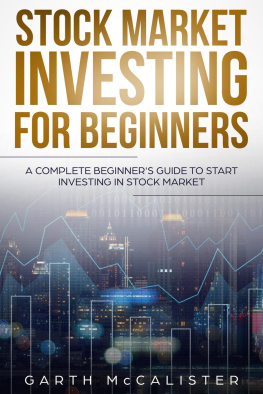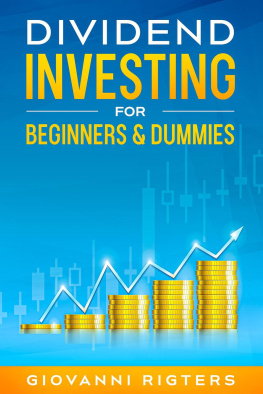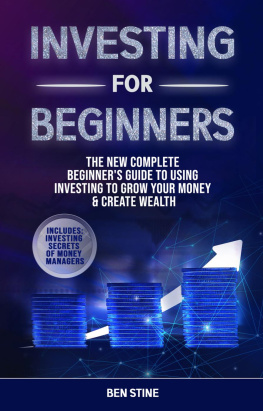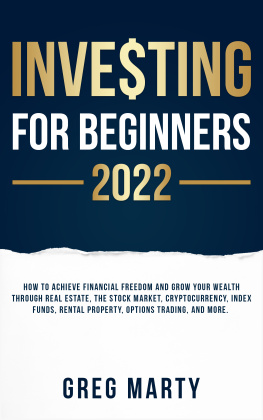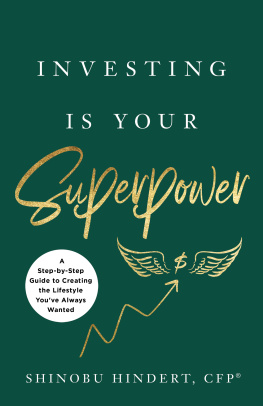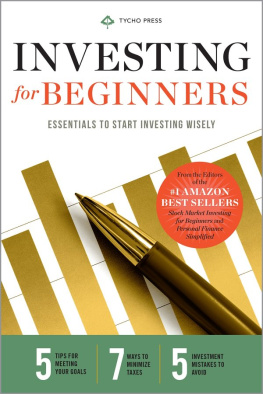
Aggressive: This refers to an investing style that takes on a lot of risk, which should lead to more gains over the long term.
Assets: Things you own that have value. An asset could be money in the bank, a car, shares in a company, or a property.
Bear market: A general decline in the stock market over a period of time, as people move from feeling optimistic to more pessimistic about what might be ahead.
Bonds: A loan that you offer to a government or company. Its like an IOU you give money in exchange for interest payments, and the promise of your money back at a certain point in time.
Bull market: A period of time on the sharemarket where lots of people are feeling confident and investing on the expectation that things will get better.
Capital gain: The profit you make when you sell an asset: the difference between the sale price and what you initially paid for it.
Dividend: Money paid to investors out of a companys profit. Dividend yield is the rate of return that investors are getting from a particular company through dividends. The dividend yield is calculated as the annual dividend paid divided by share price.
Float: The number of shares that are available to trade in any company.
Initial public offer (IPO): The process of offering the public the opportunity to invest in a company for the first time.
Hedging: An investment thats designed to reduce the risk of price movements, a bit like an insurance policy.
Index: A measure of a group of assets. We talk about the NZX50 or ASX50 index, which are the biggest 50 companies on the New Zealand and Australian exchanges.
Liquidity: How easy it is to sell an investment. A highly liquid investment is easy to get out of, like a bank account. A less liquid investment is something like a house, that requires a process to sell.
Market capitalisation: The total value of all of a companys issued shares.
Rebalance: Rebalancing is the process of reconfiguring an investment portfolio (or managed fund) to keep it in line with a desired target. If you had a fund that you wanted to be 50 per cent shares and 50 per cent cash, but then the shares performed really well and were suddenly worth more than 50 per cent of the fund, the fund manager would have to sell some shares to rebalance the fund back to 50:50.
Recession: Two consecutive quarters of a drop in economic activity.
Retail investors: Non-professional investors investing their own money. (People like you, probably.)
Shares: Small slices of a company owned by investors. Shares can be publicly traded, on a sharemarket, or owned privately. (You might also hear people talking about stocks and equities these terms mean the same thing.)
Time horizon: The amount of time you have between buying your shares and needing the money back.
We started Sharesies with one clear goal in mind. We wanted someone with $5 to have the same investment opportunities as someone with $50,000 or $5 million.
We believe that everyone deserves the opportunity to develop their wealth. If the wealthiest people in the world can grow their wealth by investing, why cant those who still have a bit more room to grow?
That might sound like a pretty simple premise. But even in the relatively recent past, things were quite different.
Most people thought investing was something other people did predominantly rich people who were also male, retired (or nearing it) and living in big cities. Thats what the stats showed, too.
Until recently, almost all share trading was arranged through sharebrokers, and it was hard to get in on the action unless you had enough money to make the minimum trade size and justify the brokerage fees. And to get access to extra support or financial advice you needed to have seriously big sums to invest at least tens of thousands of dollars, but more likely hundreds of thousands.
Sure, there was property investment. Many people have grown up watching others make lots of money from rental properties, and hoped to be able to do the same. But for some the prospect of owning a home to live in is moving further out of reach, let alone buying property as a rental investment.
We looked at the investment landscape and thought it wasnt fair. Doesnt everyone deserve the chance to build their wealth? New technology began to make it all seem possible.
Thats where the Sharesies story begins.
A spark of an idea
In 2016, Sonya Williams, who has a background in product and marketing at technology firms, started working for a bank.
She thought she was pretty money savvy, but working in the banking industry showed her she had a lot more to learn.
Sonya wanted to invest and continue to grow her wealth, but she wasnt sure what to do next. Shed been lucky to get into the property market as a homeowner when it was still possible, but prices had shot ahead and the prospect of an investment property was now out of reach.
She started looking for ways to invest but hit dead end after dead end. In many cases, she felt shut down by anti-marketing instead of trying to lure her in, the message was telling her to go away. Investment opportunities were clearly pitched at a different kind of audience.
At the same time there was a lot of chat going on in the media about the generation wars, headlines intended to stoke a millennials versus boomers divide with property at the centre. Rising house prices were putting pressure on young people, who felt that their parents generation had had it easier. For their part, some baby boomers were claiming that young people would be better off if they werent wasting their money on luxuries like takeaway coffee and smashed avocado on toast.
However, it was becoming increasingly obvious that it wasnt just a matter of cutting out brunches to save a bit more money. You could save half your income for years and still not be able to buy a house. Rents were climbing, and it was becoming harder and harder for anyone to save for a house deposit before house prices jumped out of reach again. It was feeling a bit dire for people who were just starting out.
Sonya started to wonder what an alternative might be. There must be another way for people to grow their wealth, outside of what had worked for earlier generations, she thought.
She recalls one night at home with her partner, Ben Crotty, who is a talented creative, designer and illustrator, talking about whether to go out for dinner. They figured it would cost about $50 and Sonya remembers wishing she could do something else with the money.
What if it were possible to invest money quickly, easily and in a really fun way? Imagine if it were as easy to put your money into an investment that would start to build your wealth as it was to order dinner online, or to pop something into the shopping cart on your favourite website?
Sonya started talking about her idea with people at work, and a colleague, John Scully, introduced her to Leighton Roberts.
Leighton had started an investment club as a teenager with friends and family, and they all steadily deposited $50 a week into a joint bank account. When they had saved a decent amount, they started investing. The club started with residential property, because that was what everyone seemed to invest in, then added a sustainable chicken farm, then a commercial property. By the time he met Sonya, Leightons group was investing almost exclusively in start-up companies. The amount of money they were putting aside each week hadnt changed they were still contributing $50 a week but they had been able to pull off some pretty significant investments in the decade or so they had been working together.
Next page


